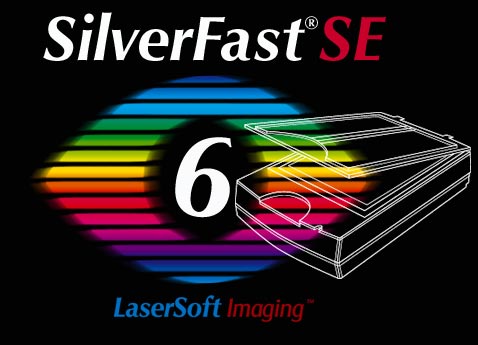


Note though, Tim Parkin, who runs the above linked drum-scanning service, reviewed the Plustek OpticFilm 120 (paywalled), and had this to say (I’m quoting very selectively here): “What’s quite surprising is how good the Opticfilm 120 is compared with the Howtek (4500 Drum Scanner)”, and “The Opticfilm 120 is undoubtedly a very good scanner and if the film holder and focus issues can be addressed this should give results that are dramatically better than the Epson V750 and potentially on a par with the Nikon 9000”. If you want the ultimate quality, because they really are very, very good, you could go in that direction. Some brave souls offer bespoke scanning services using these monsters.
SILVERFAST OR VUESCAN TO SCAN FILM SOFTWARE
And as for software - usually dongle protected through something like Apple ADB - forget about compatibility with anything released after around 2005. They are very large, very heavy, and very cumbersome. But wait - they are very complex to install, maintain, and operate, requiring specialist knowledge which is hard to find even on the internet. These formerly insanely expensive devices, found only in Pre-Press shops, can now be acquired for something close to a pittance. Note, there is another path, which is to buy a second-hand drum scanner. So realistically, you need to rule out the second hand market if you’re planning on staying in film scanning for the foreseeable future.
SILVERFAST OR VUESCAN TO SCAN FILM DRIVERS
And drivers compatible with latest operating systems are unlikely to be found. As said before, these are complex, delicate devices, subject to considerable wear, and don’t last for ever. There are of course still secondhand models to be found, but the prices tend to be insane, there is mostly no servicing or repair available, and people tend to hang on to scanners that work properly. Add to this several others producing 35mm models only (including Canon and Plustek), and you had a healthy market at a range of price points. There were at least 5 manufacturers active in desktop MF film scanners alone (Nikon, Minolta, Polaroid, Microtek, Imacon), with new models and innovations appearing regularly. I don’t really know a lot about Plustek the company, but my impression is of a small but enthusiastic company in a very small pool, not unlike Cosina with rangefinder cameras - oh, wait.įifteen years ago the story was very, very different. The Hasselblad scanners are so mind-blowingly expensive that it is hard to imagine them having any customers other than major media companies or very well-funded public institutions. The Reflecta scanners are badge-engineered versions of a white-label device built in Taiwan and sold under several labels, including Pacific Imaging. Please correct my if I’m wrong, but I believe there are three current manufacturers of MF film scanners: Plustek, Reflecta, and Hasselblad. And then when you narrow it down even more to medium format film scanning, it gets crazy. Frankly it’s astonishing that any enterprises still find a viable business model in this space. And customers - well, the few that exist - are demanding a perfect solution at an increasingly low cost. Film scanning requires a combination of a complex opto-electronic-mechanical device together with high specialised and complex software. Film scanning is now right on the edge of a niche within a niche market - film photography - which is either small but stable, or still dwindling, depending on who you believe, and if you consider “Lomography” to be a genuine component of this market (I don’t). First up, an appeal: people, please manage your expectations.


 0 kommentar(er)
0 kommentar(er)
